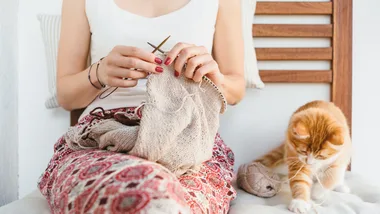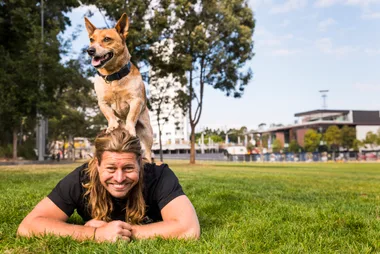Nurturing that brilliant display in your garden and coaxing that indoor plant back to life…You may spend hours caring for your plants, and the last thing you want is your pet destroying the fruits of your labour. But it’s equally important to think about the damage your plants can do to your pet.
Many outdoor and indoor plants are harmful to dogs and cats if ingested. Inside your house, plants such as Cyclamens, Dumb Cane and Elephant Ears are dangerous for chew-happy puppies. Some types of lily, such as the daylily and tiger lily, can make your cat very ill if eaten.
In the garden, the bulbs of Daffodils, Jonquils, Tulips, Spider Lilies, Nerines and Crocus are all poisonous. Make sure your ball-loving puppy or dog doesn’t mistake a bulb for a toy.
Most people know that Oleander is very poisonous for humans and animals alike. Some of the other plants that can harm your pet are Azaleas, Foxglove, Hydrangeas, Ivy, Rhododendron, Lily of the Valley, Mountain Laurel, Sweet Peas, Lantana and Wisteria.
Your pet might only have a nibble or two at a harmful plant and be fine, but a hungry or bored pet might chew themselves to serious illness, or even death.
If you suspect your pet has ingested a dangerous plant, contact your local vet immediately. If you can, take note of what plant your pet has eaten – or which plant you think they have eaten. Show a piece of the plant to a vet or someone at a local nursery and they can help you identify it if you’re not sure.
Of course, prevention is the best cure. Check that you know exactly what kind of plants you have in your house and garden, so you can keep your pets away from the potentially harmful ones.
Hang indoor plants up high where your pet can’t get at them. Ensure that your pet can’t tug on overhanging leaves or tendrils to pull a plant down – this is a good precaution to save your carpets too!
Bird netting is another good way to keep pets away from harmful plants, as is fencing off the plant if it’s outdoors.
In your backyard, common garden plants and grasses can cause an allergic reaction in dogs – Wandering Jew, paspalam and rye grass can give dogs itchy feet and legs, as well as stomach rashes. Mow your lawns to stop seeding, or keep dogs in a mown area only.
And while you’re thinking about your garden and pets, keep in mind that animals are at risk from fertilisers and pesticides. Keep them away from areas of your garden that have been sprayed with pesticides or chemical fertilisers. Watch out for snail bait poison – this stuff has caused many a dog to take a trip to the vet!
For more great pet info, check out www.petnet.com.au
Newsletter conversion description. Get the latest in your inbox.















